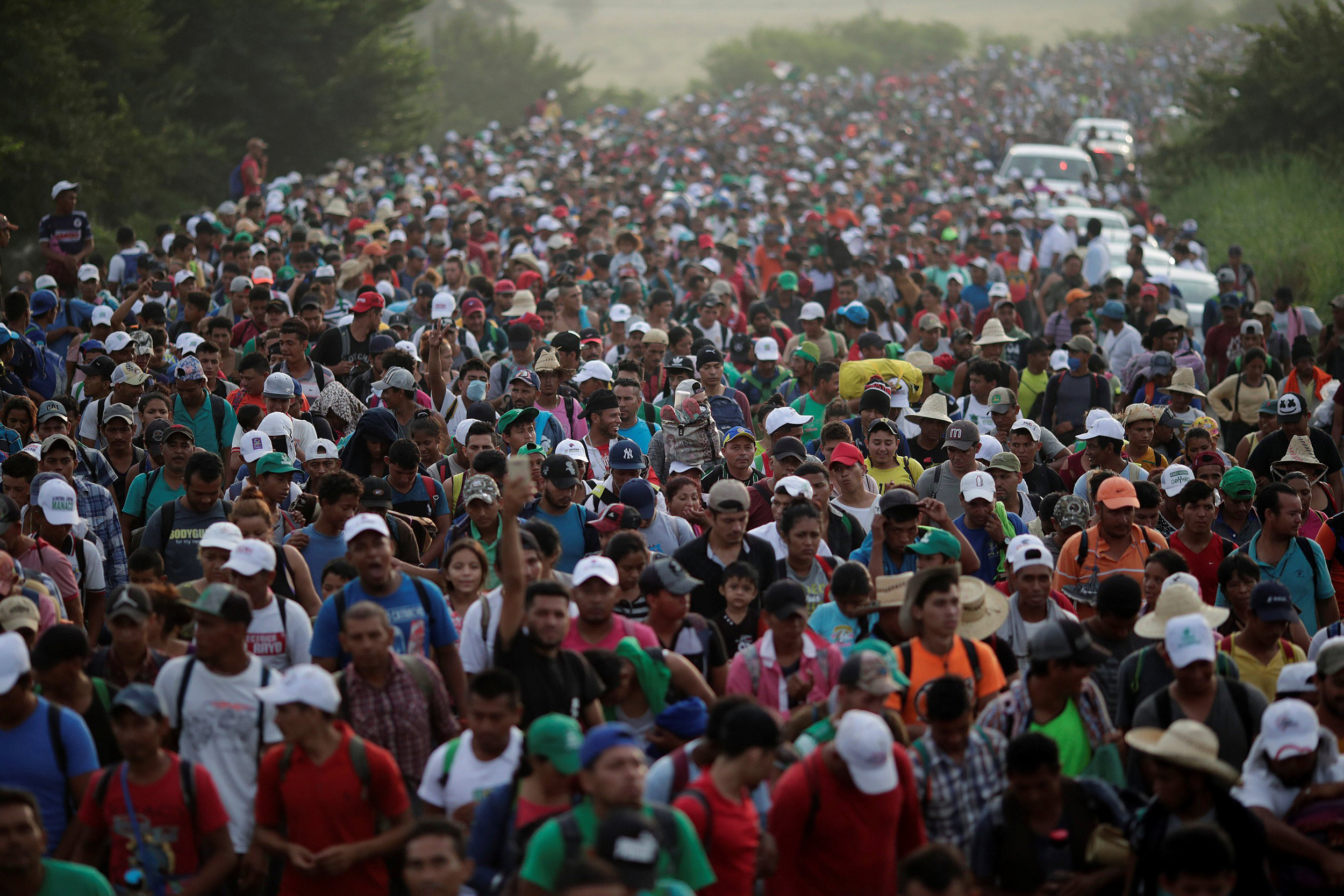STORY BY DANIEL SAENZ
It all started out with a viral clip of a crowd in Honduras giving money and supplies to another crowd. Once the clip gained all the attention that it did, everyone soon realized this crowd was a migrant caravan that was heading to the United States. Such a journey is rather daring. It requires the migrants to cross through both Guatemala and Mexico as well as the security apparatuses of both of those countries. The caravan crossed through Guatemala fairly smoothly. Initially, the caravan had hit a major obstacle in Mexico. Mexican security guards had already begun to use tear gas on the caravan.
This, however, was not enough as the caravan quickly burst through into Mexico. Interestingly enough, the Mexican government offered residency and a path to employment. Nonetheless, the caravan has turned down the offer, as the people within have made it clear that their end goal is the United States.
Dr. Marco A. Macias, a professor of history here at Fort Hays State, was gracious enough to weigh on why so many migrants from Central America are coming here, as well as the various other factors at play in the political backlash against them. Macias points out that the political developments driving migration to the United States are not at all new. In fact, they have a historical background on two main fronts: historical transnational immigration, and U.S. involvement in the region.
Under the pretense of fighting communism abroad in the 60s, 70s, and 80s, we welcomed numerous immigrants from across the world, including Vietnam, the Middle East, and Central America who we deemed victims of communism. Immigration to the U.S. is an unintentional consequence of the struggle for global hegemony between the United States and the Soviet Union.
“Why did so many people from El Salvador seek refuge in the 1980s? Because they were displaced by a civil war that the U.S. supported indirectly by supporting the military of that country,” Macias said. “Of course, this does not say anything to the ‘well what if we had not intervened in Central America?’, we just don’t know. We also have to think that many immigrants already know people or have family that lives here in the U.S., so I would assume, there is a support network.”
Also, one of the main problems with the coverage of this in the media is that the news frequently frames the issue in terms of the United States without properly mentioning that Mexico is a political actor with its own interests that it is looking out for.
“Mexico (as directed, or asked by the U.S.) does a lot (or tries to, anyway) to patrol its southern border against the illegal immigration. Mexico is asking itself the same question, what to do about illegal immigration from Central America? Some even believe that Central Americans are going to Mexico to take away jobs. In reality, it is more likely that the caravan is heading towards the United States,” Macias said. “So in Mexico, while many communities offer their support to the caravan (by providing food, and safe passage), it also creates a strain for local communities (and of people that ask themselves), why are we helping these people and not helping our own people? Mexico has some of the most severe visa requirements for people from Central America and South America. I think that in retrospect, Mexico is thinking, what can we do? Is this really our problem?”
Why then the United States? The answer is quite obvious: stability. We are the land of opportunity. We are also a relatively safe country. Many of the people within the caravan are fleeing a country that is rife with corruption, poverty, and murder as Honduras has one the largest murder rates in the world. Given those odds, it makes sense that people want to flee to the world superpower that prides itself on its wealth and stability.
George H.W. Bush and Ronald Reagan understood this to be true as there is now a famous clip where the two candidates are duking it out over who is the most passionate and understanding to the Latino immigrants to the United States.
Has this backlash against Latino migrants has always been around or has it been exacerbated by today’s political climate?
“This is a historical question, the answer is, it depends. So, if we look at the late 19th century, the answer is no, we did not really care about Latino immigrants coming into the U.S., we were more concerned about the Chinese,” Macias said. “We hardly did anything to patrol the U.S. Mexico border for most of the 20th century. There are documentaries that show people crossing in the 1980s into El Paso to work for the day. There were people on either side of the river, and so you could pay them to cross the border.
“Of course, we have things like Operation Wetback in the 1960s, or the Repatriations of the 1930s, that targeted Latinos and sent them back to Mexico. Blaming the immigrant — or the other, like the Nazi’s with the Jews — is not unique to the U.S., other nations across the world have historically done the same, and are still doing so. The question, why do immigrants come? Mostly because they are political refugees or economic refugees.”
So where do we go from here? The Pentagon announced that it will deploy over 5,200 troops to the southern border with Mexico. Agents with the Department of Homeland Security closed down Paso Del Norte between El Paso, Texas and Juarez, Mexico to conduct drills. Because the caravan is still 1,500 miles away from the border, there is still not telling on what will happen next.

